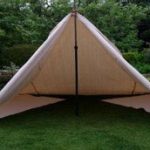More tips to improve horse riding safety measures
Horse riding is extremely adventurous, edifying sport and hobby as well. It is one of the most enjoyable activities of life too. But it is mandatory for the rider to follow safety steps. As in every sport there are stringent measures to be practiced by the rider. Great Britain has three hundred million horse riders.
Horses are of course powerful animals. Handling them needs good effort and tremendous coaching. Injuries happen when the rider gets dismounted from the horse. Horses are often six feet. They weigh nearly 1000 pounds. The tremendous speed animal covers 35 miles per hour.
Common Injuries in Horse riding
Riding a horse is always accompanied by injuries. The most common type of injuries is fractures, sprains, strains, bruises and abrasion. The horse kicks the rider to get dismounted as well. But the most terrific one is the thrown away from the horse. This causes severe damages to the head affecting the brain and skull, neck and spine too.
Safe approach is always a highlighted feature in horse riding. Horses get easily spooked. This is one major reason for the injuries. Horses do get easily frightened. Riders have to be aware of the causes that can petrify the horses. These are the following.
- Movements that is unexpected or sudden.
- A loud sound distracts the horses. These include alarms, screaming, bells, and cell phones to name a few.
- Flashes from the camera
- insects and wasps
- Unleashed dogs frighten the horses very badly.
Mandatory safety Measures to be adapted by the horse rider
The safety compulsory measures to be followed by the rider are as follows.
- Being an exciting summer sport rider should be aware of the potential dangers. A coaching from the professionals is required.
- Wearing a helmet always does protect you from head injuries. The helmet should be well fitted as well. Equestrians helmet is advisable. They are designed in a manner to protect the back of the head, front side injuries as well.
- Stirrup safety is nothing but wearing a good heel to prevent your foot from slipping from the stirrups. This prevents the rider from being dragged by the horse. Safety stirrups include peacock stirrups, toe stoppers or break away stirrups.
- Always be alert and attentive.
- Never ride alone.
- Take hoof pick.
- Ride in safe places.
- Always carry a penknife emergency repair.
- Don’t walk near the horse when it is tied.
- The saddles should be fitted properly.
- Proper attire is mandatory. Jeans is quiet acceptable.
- Gloves are required.
- Stunts are not be done by amateurs
- Check your horse once in two days for any signs of illness.
- Ride a horse that is suitable for your level.
- Body protectors are required
- Always the presence of buddy is mandatory.
- Carry your cell phone or two way radio.
Horse riding is exciting and interesting clubbed with safety measures.



